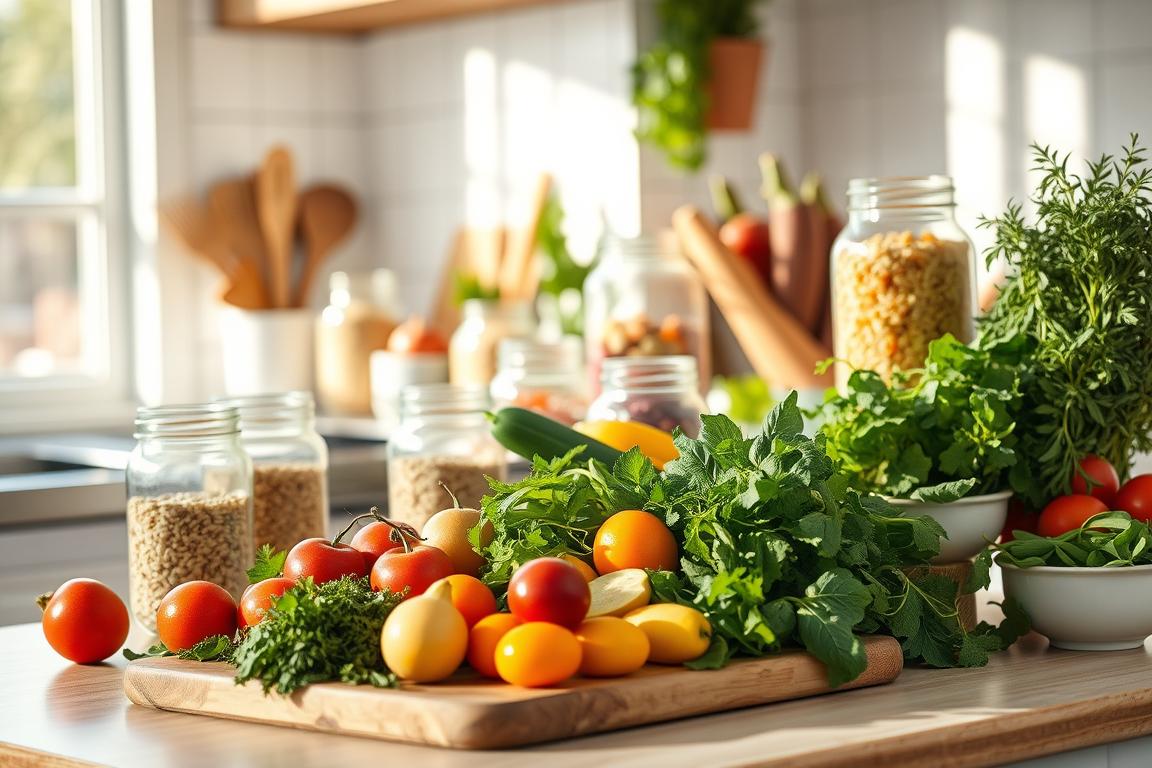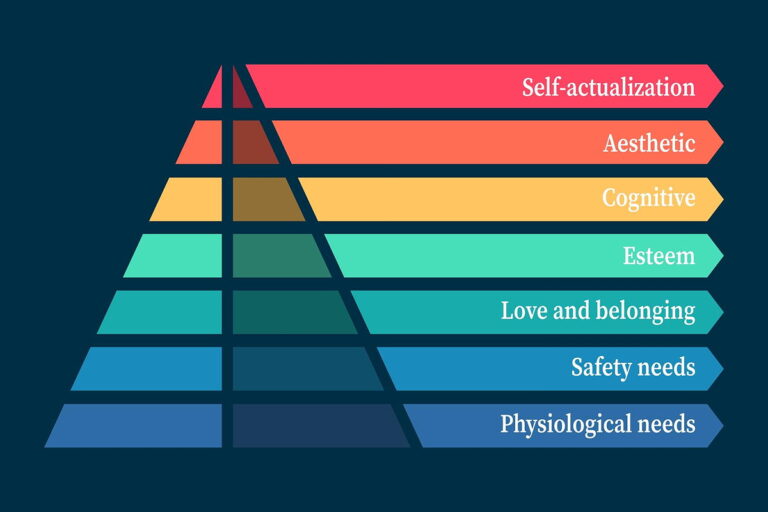Clean eating without dogma – keeping a healthy diet relaxed
Did you know that, according to a study by the German Nutrition Society, almost 55% of adults in Germany describe their diet as healthy, but many still feel that they suffer from nutritional stress? This paradox raises an important question: How can you integrate clean eating and healthy eating into your everyday life in a relaxed and stress-free way?
Clean eating focuses on a flexible, uncomplicated approach to healthy eating that relies on natural and minimally processed foods. Instead of imposing strict rules or restrictions, this approach invites you to consume natural foods without pressure and with pleasure. The important thing here is that the diet brings about sustainable and long-term changes without being stressful.
With clean eating, a healthy diet can be fun and relaxed by gradually focusing on natural and unprocessed foods and integrating them into your daily diet. Without constant calculations or complicated guidelines, the focus is placed on fresh, seasonal and regional ingredients that increase the pleasure of eating and at the same time contribute to a sustainable lifestyle.
What is clean eating?
Clean eating is based on the consumption of unprocessed food without artificial additives and is defined by eating natural, wholesome products. The aim is to promote a balanced and healthy diet.
The basic principles of clean eating
The basic principles of clean eating focus on a few key aspects:
- Consumption of fresh, unprocessed food
- Avoidance of artificial additives and preservatives
- Priority on regional and seasonal products
- Regular meals without extreme diets or restrictions
- Drink plenty of water and avoid sugar-sweetened drinks
History and origin
The history of clean eating goes back to the rejection of industrially processed food and the trend towards home-cooked meals with fresh ingredients. This nutritional concept was influenced by earlier movements such as wholefood nutrition and received modern impulses from Californian and Mediterranean cuisine. Pioneers such as Alice Waters and her fresh, local food initiative played a key role in popularizing clean eating.
Enthusiasm for natural foods
In our modern world, the return to natural nutrition is becoming increasingly important. This enthusiasm is reflected above all in the increasing popularity of unprocessed foods. The consumption of unprocessed foods is supported by the health and environmental benefits they offer. These include fewer artificial additives and preserved ingredients.
Why unprocessed food?
Unprocessed foods not only promote general well-being, but also help to prevent health problems. These foods are rich in nutrients and contain no unnecessary additives. They support the immune system, aid digestion and contribute to a balanced diet. In addition, unprocessed foods are often much fresher and tastier, which significantly enhances the enjoyment experience.
Examples of natural foods
- Fresh fruit and vegetables: These are rich in vitamins, minerals and fiber.
- Whole grain products: Contain complex carbohydrates and promote healthy digestion.
- Unsweetened dairy products: Provides calcium and protein without added sugar.
- Freshly caught fish: An excellent source of protein and rich in omega-3 fatty acids.
These examples of natural foods show that it can be easy and tasty to integrate a healthy and unprocessed diet into everyday life. Choosing unprocessed foods not only contributes to personal health, but also to the protection and sustainability of our environment.
Use seasonal and regional ingredients
A central aspect of clean eating is the use of seasonal and regional ingredients. This practice not only protects the environment, but also supports the local economy and guarantees freshness and a variety of flavors in the diet.
Eating seasonal ingredients means consuming foods that are in their natural harvest season. This leads to a better nutrient density and a more intense taste. In this context, local producers offer the advantage of short transport routes, which preserves the freshness of the products and minimizes the CO2 footprint. In addition, buying regional ingredients promotes sustainable agriculture and helps to strengthen the local economy.
Understanding what seasonal produce is available in your region can enrich your own cooking. The changing seasons produce different treasures: strawberries in summer, pumpkins in fall and root vegetables in winter. Conscious shopping based on the availability of seasonal ingredients can help to exploit the full potential of nature and ensure a balanced, varied diet.
Conscious cooking for a balanced diet
Conscious cooking contributes significantly to a balanced diet. This involves selecting high-quality ingredients and preparing meals with care. Such an approach not only leads to healthier eating habits, but also promotes a better awareness of food and its processing.
Tips for everyday cooking
Integrating healthy cooking tips into your daily routine can make a big difference. Plan your meals in advance and prepare key ingredients to avoid stress and rushing. A weekly menu and shopping list will help you to have healthy options to hand. Avoid processed foods and opt for fresh, local produce.
Advantages of cooking for yourself
Cooking for yourself gives you control over the ingredients and their quality, which leads to a healthier and more balanced diet. By cooking consciously, you can avoid unnecessary additives and preservatives and at the same time be creative in the kitchen. Another advantage is that you can better adapt the taste and portion sizes to your needs.
Clean eating without dogma
Clean eating without dogma means that you are not rigidly bound by strict dietary rules. Instead, the focus is on relaxed clean eating, where enjoyment and individual preferences are taken into account. Flexibility is the key word here to promote a flexible diet that adapts to each person’s life.
Many people find relaxed clean eating liberating as it allows you to listen to your body and respond to its needs. This can mean incorporating processed foods into your diet occasionally without feeling guilty. Flexible eating also allows you to enjoy social occasions and spontaneous indulgences without feeling the need to deviate from a set plan.
In summary, clean eating without dogma emphasizes the importance of a healthy and mindful approach to food, without neglecting enjoyment. It enables a sustainable and stress-free approach to a healthy diet.
Clean eating recipes for everyday life
Healthy eating doesn’t have to be complicated or time-consuming. With the right clean eating recipes, you can make your everyday life nutritious and enjoyable. These simple ideas for breakfast, lunch and snacks will help you start the day in a balanced way and continue it in a healthy way.
Breakfast ideas
A healthy breakfast is the perfect start to the day. Popular breakfast ideas include nutrient-rich options such as overnight oats, smoothie bowls and wholegrain porridge. These recipes provide the energy you need for the day and keep you full for a long time.
Lunch dishes
Light but filling meals are ideal for the lunch break. Fresh salads, quinoa bowls and vegetable wraps are some of the most popular clean eating recipes for lunch. They are quick to prepare and offer a variety of flavors and nutrients.
Healthy snacks
Healthy snacks are an important part of clean eating and help to keep blood sugar levels stable. Examples include nut mixes, vegetable sticks with hummus or fruit with yogurt. These snacks are easy to take with you and prevent cravings for unhealthy alternatives.
Clean eating philosophy: more than just nutrition
The clean eating philosophy encompasses far more than just healthy eating habits. It is a comprehensive way of life that brings the body and mind into harmony.
The role of movement
Exercise plays a central role in the clean eating philosophy. Regular physical activity not only supports the metabolism, but also promotes general well-being. Whether it’s yoga, running or strength training – any type of exercise can help to keep the body fit and strengthen the mind.
“Exercise is the key to a healthy life. It’s not just about burning calories, but also about building stamina and strength.”
Mental health and mindfulness
Mental health and mindfulness are also essential components of the clean eating philosophy. Meditation and mindful practices can reduce stress and promote inner balance. Integrating mindfulness exercises into everyday life helps to sharpen focus and improve mental health.
A holistic approach that takes both exercise and mental health into account creates the perfect basis for a sustainable and balanced lifestyle.
Advantages of clean eating
Clean eating offers numerous benefits that affect both our health and the environment. The conscious selection of natural, unprocessed foods and the avoidance of industrially manufactured products contributes to a better sense of well-being and at the same time reduces the ecological footprint.
Health benefits
Clean eating allows us to provide our body with all the nutrients it needs to function optimally. The benefits of clean eating include:
- Improved energy levels
- Reducing the risk of chronic diseases such as cardiovascular disease and type 2 diabetes
- Support for healthy weight management
- Promote digestive health with high-fiber foods
Positive effects on the environment
Clean eating also makes a significant contribution to environmental benefits. By giving preference to seasonal and regional foods, energy consumption for transportation and storage is significantly reduced. In addition, the reduced consumption of packaged and processed products minimizes packaging waste. This is a sustainable approach that also supports local agriculture and thus promotes biodiversity.
Eating together: Clean eating and social interactions
The social aspects of clean eating should not be underestimated. Shared meals promote social well-being and strengthen the bonds between family members and friends. The conscious preparation and sharing of healthy dishes creates an atmosphere of community and mutual support.
Clean eating offers a fantastic opportunity to encourage social interaction. Socializing while spreading healthy eating habits brings people together and allows for a positive impact on lifestyle. Shared activities such as cooking evenings or healthy picnics not only spread healthy eating habits, but also raise awareness of the importance of nutrition and well-being.
Clean eating and sustainability
Clean eating goes beyond healthy eating and promotes *sustainability* at the same time. The principles of clean eating support sustainable practices such as buying locally produced and seasonal produce and minimizing food waste through efficient storage and recycling of leftovers.
Environmentally friendly shopping habits
*Environmentally friendly clean eating* starts with shopping. The focus is on regional and seasonal products that are not only fresher, but also require less transportation. Weekly markets and organic food stores are excellent places to implement environmentally friendly shopping habits and support the local economy.
Reduction of food waste
Conscious meal planning and efficient storage can significantly reduce food waste. Leftovers should be used creatively so that nothing goes to waste. Simple measures such as freezing surplus food or composting organic waste make a significant contribution to sustainability and are an essential part of environmentally friendly clean eating.
Myths and facts about clean eating
Myths about clean eating are often floating around and lead to misunderstandings about this diet. One common myth is that clean eating is only accessible to wealthy people. In truth, regional and seasonal products, which are often cheaper, can form the basis.
Another myth about clean eating is that you have to give up all luxury foods. However, the truth about clean eating is that there are no strict bans, but rather a conscious choice and enjoyment in moderation.
“Clean eating does not mean following rigorous dietary restrictions, but promoting a balanced and varied diet.” – Dr. Petra Bracht
The myths about clean eating also include the assumption that this lifestyle is time-consuming. In fact, well-planned clean eating can not only save time, but also simplify food preparation. Meal prepping and simple recipes are the key here.
Truths about clean eating emphasize that it is a flexible and sustainable lifestyle. It is not a temporary diet, but a long-term change to a healthier diet. This concept eliminates food waste and promotes conscious consumer behavior.
From dispelling the myths about clean eating to accepting the truths about clean eating, this nutritional track offers a simple, everyday way to eat healthy and balanced. Make sure you challenge myths and rely on science-based information to make the best choices for your diet.
Clean Eating Lifestyle: A day in the life
A clean eating day often starts with a hearty breakfast. A popular example is a smoothie made from fresh fruit, green leafy vegetables and almond milk. This provides a versatile foundation for a clean eating day and provides essential vitamins and nutrients.
The planning and preparation of meals is crucial in a clean eating daily routine. Lunch dishes often consist of healthy bowls with quinoa, colorful vegetables and a protein source such as chicken or tofu. Careful shopping that prioritizes seasonal and local ingredients supports this diet. Dinner can be light and nutritious, such as baked salmon with steamed vegetables.
Snack breaks are also important. Instead of processed junk food, many people who practice clean eating choose natural snacks such as nuts, seeds or fresh fruit. Such choices not only help to keep the body fit, but also promote sustainable consumption habits.
In the evening, an awareness of your own body and mind enriches your everyday life. Light movement exercises such as yoga or a walk round off the day. This holistic approach shows how a clean eating lifestyle offers both physical and mental benefits. In this way, clean eating can be seamlessly integrated into a healthy and sustainable lifestyle.
Tips for getting started with clean eating
Getting started with clean eating can be an exciting journey to a healthier lifestyle. It doesn’t require drastic changes overnight; instead, small and thoughtful steps can work wonders.
Small steps for big changes
To get started with clean eating, we recommend gradually integrating new, healthy habits. Here are a few tips for beginners:
- Make a weekly plan for your meals.
- Replace unhealthy snacks with fresh fruit or nuts.
- Avoid processed foods and cook your own food as often as possible.
- Drink enough water and avoid sugary drinks.
Dealing with setbacks
Setbacks are a natural part of any change process. It is important not to be discouraged by them. Here are some tips for beginners on how to get back on track after a setback:
- Accept that mistakes can happen and learn from them.
- Focus on the positive changes you have already achieved.
- Set yourself realistic goals and celebrate small successes.
- Get support from friends or family who can motivate you.
With these tips for beginners, getting started with clean eating becomes a feasible and enjoyable experience. Every step towards a healthier diet counts!
Clean eating and indulgence: how to find the balance
For many newcomers to clean eating, the question arises of how to combine a healthy diet with the enjoyment of culinary delights. The main aim here is to find new ways to harmonize taste and health. An important part of this is to focus on natural flavors and high-quality ingredients. Through creative recipes and the conscious selection of seasonal and regional foods, the enjoyment of clean eating can be integrated into everyday life.
A balanced diet not only requires avoiding processed foods, but also emphasizes the conscious handling of food. This means taking time to cook and enjoy meals in peace. In this way, simple dishes that are rich in nutrients can nourish both body and soul. It’s about recognizing the connection between nutrition and well-being and integrating it into your own lifestyle.
To find the right balance, it is helpful to regularly look for new recipes and try out different preparation methods. This not only contributes to variety on the plate, but also promotes enjoyment of food. Cooking and eating together with friends and family can also be an important aspect that enhances the enjoyment of clean eating. In this way, a balanced diet becomes a source of health and satisfaction.




